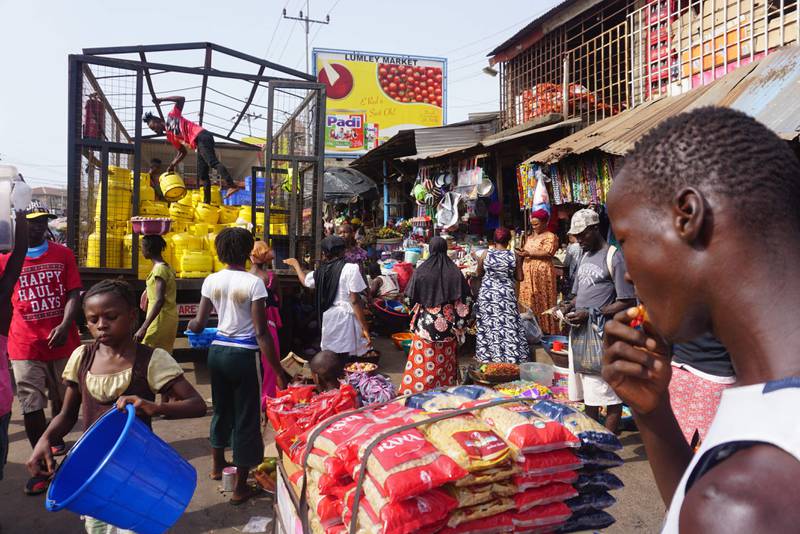World Bank warns of stagflation and slashes growth forecast for global economy

The World Bank slashed its growth forecast for the global economy for the second time this year as the Ukraine war, now in its fourth month, exacerbates the slowdown from the Covid-19 pandemic. The lender lowered its growth estimate for 2022 to 2.9 per cent, from the 3.2 per cent projection it issued in April, as the escalating geopolitical crisis threatens to lead to a “protracted period of feeble growth and elevated inflation”, the multilateral lender said in a report on Tuesday.
The new forecast is significantly lower than the 4.1 per cent estimate made in January and a deceleration from the 5.7 per cent expansion recorded in 2021. Growth is now expected to hover around a similar pace between 2023 and 2024, as the Ukraine war disrupts economic activity, investment and trade, denting pent-up demand as fiscal and monetary policy accommodation is withdrawn
However, with rising inflation, central banks are now raising interest rates. Inflation is at a 40-year high in the US and the UK. It hit a record in the euro area in April and is rising globally. Food prices remain close to a record high, driven up by the war in Ukraine, while oil prices have increased by more than 70 per cent since last year, leading to higher transport costs.
Russia accounts for about 45 per cent of the EU’s total gas imports and about 10 per cent of total oil exports globally. Together, Russia and Ukraine account for about a quarter of global wheat exports, about 15 per cent of corn exports and about 75 per cent of sunflower oils exports.
The rising costs of fuel and fertiliser and transport costs are piling additional pressure on food prices. “The war in Ukraine, lockdowns in China, supply chain disruptions and the risk of stagflation are hammering growth,” said World Bank Group President David Malpass.
Stagflation is when an economy is characterised by stagnant demand, high inflation, slow growth, unemployment and surging prices. “For many countries, recession will be hard to avoid. Markets look forward, so it is urgent to encourage production and avoid trade restrictions. Changes in fiscal, monetary, climate and debt policy are needed to counter capital misallocation and inequality,” said Mr Malpass.
The International Monetary Fund has also lowered its growth forecast for the global economy to 3.6 per cent for 2022, while the Institute of International Finance cut its estimate to 2.3 per cent.
In its Global Economic Prospects report, the World Bank pointed to the recovery from the stagflation of the 1970s that required steep increases in interest rates in major advanced economies, which it said spurred a number of financial crises in emerging market and developing economies. The lender said unlike the 1970s, the US dollar is strong and global inflation is expected to moderate next year but could remain above the inflation targets of many economies.
As a result of the damage from the pandemic and the war, the level of per capita income in developing economies this year will be about 5 per cent below its pre-pandemic trend. The debt burden of the world’s poor countries rose 12 per cent to a record $860 billion in 2020, according to a World Bank report last year.
Even before the pandemic, many poor and middle-income countries were in a vulnerable position, with slowing economic growth and public and external debt at elevated levels. “Developing economies will have to balance the need to ensure fiscal sustainability with the need to mitigate the effects of today’s overlapping crises on their poorest citizens,” said Ayhan Kose, director of the World Bank’s Prospects Group.
“Communicating monetary policy decisions clearly, leveraging credible monetary policy frameworks and protecting central bank independence can effectively anchor inflation expectations and reduce the amount of policy tightening required to achieve the desired effects on inflation and activity.”
Growth in the Mena region is projected at 5.3 per cent in 2022, due to rising oil revenue, structural reforms in some economies and the waning of the pandemic’s adverse effects, the World Bank said.
This is an upward revision of 0.9 percentage points from the January forecast, with the expansion rate set to be the fastest in a decade. “The rebound could have been even stronger had it not been for the detrimental impact of Russia’s invasion of Ukraine on oil importers,” the multilateral lender said.
The World Bank said there was a need for decisive global and national policy action to limit the effects on those affected by the Ukraine war, cushion the blow from surging oil and food prices, speed up debt relief and expand vaccination programmes in poor countries.
“Policymakers, moreover, should refrain from distortionary policies such as price controls, subsidies and export bans, which could worsen the recent increase in commodity prices,” the lender said. “Against the challenging backdrop of higher inflation, weaker growth, tighter financial conditions and limited fiscal policy space, governments will need to reprioritise spending toward targeted relief for vulnerable populations.”b
Tags :
Previous Story
- Food and energy prices to stay at 'historically...
- World Bank says 2.4 billion women globally lack...
- Poor countries face $35bn in payments this year...
- World Bank-backed IFC plans to invest $10bn in...
- Lebanon needs up to $15bn to boost its...
- World Bank to donate $80m to boost Palestinian...
- World Bank helps Bangladesh create more jobs and...
- FTA can boost Bangladesh's exports to India by...